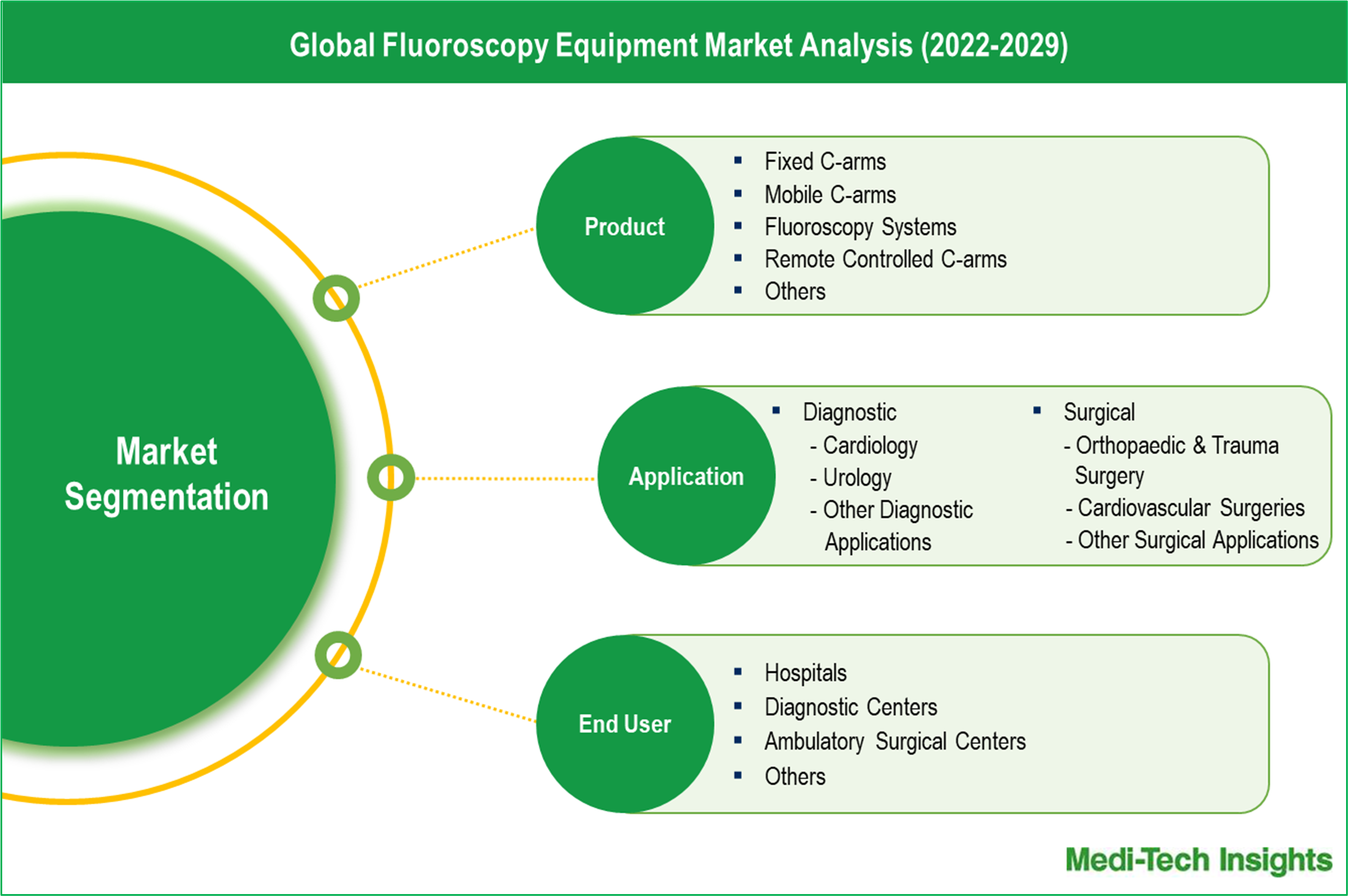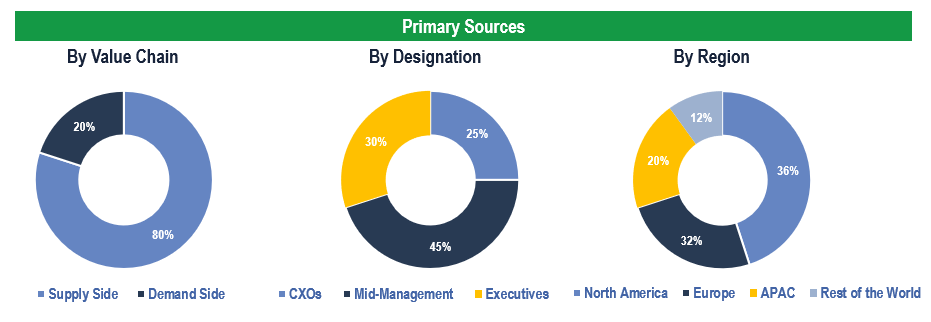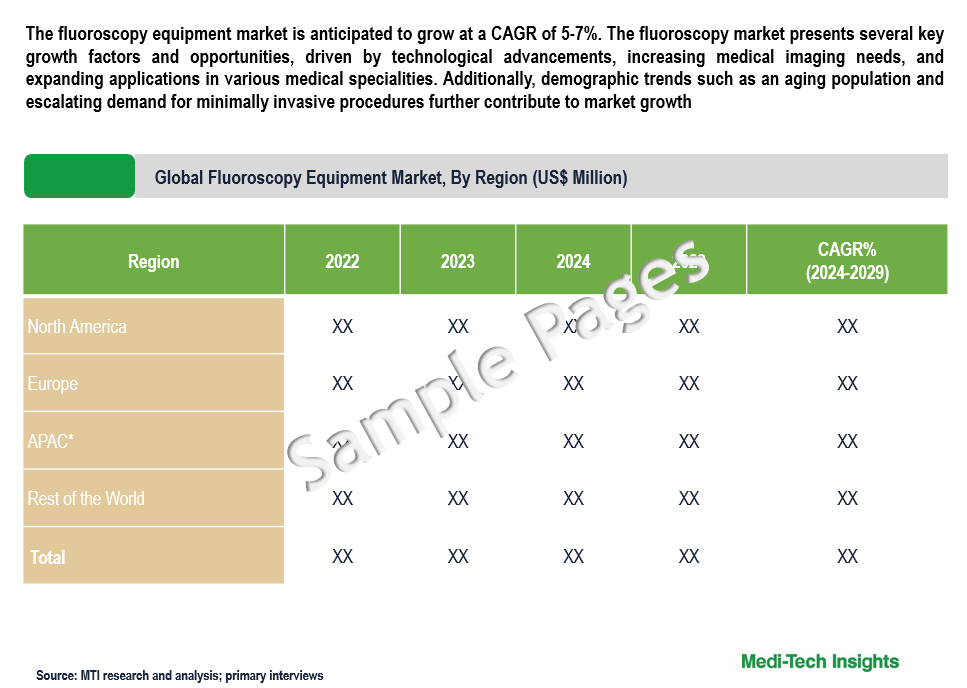
Fluoroscopy Equipment Market Size, Growth & Medical Imaging Technologies Analysis for Forecast by 2029
The Fluoroscopy Equipment Market is anticipated to grow at a CAGR of 5-7%. The fluoroscopy market presents several key growth factors and opportunities, driven by technological advancements, increasing medical imaging needs, and expanding applications in various medical specialities. Additionally, demographic trends such as an aging population and escalating demand for minimally invasive procedures further contribute to market growth. To learn more about the research report, download a sample report.
Fluoroscopy is a medical imaging technique used to obtain real-time moving images of the internal structures of a patient. It involves the use of a continuous X-ray beam to visualize the movement and function of various body parts, such as the digestive tract, blood vessels, joints, and organs like the heart and lungs. Fluoroscopy is valuable in diagnosing and guiding various medical procedures, including barium swallows, angiography, cardiac catheterization, and joint injections. Fluoroscopy equipment typically consists of several components, including an X-ray source that generates the X-ray beam, an image intensifier or flat panel detector that captures the X-rays and converts them into visible images, a C-arm that holds the X-ray source and detector and can be positioned around the patient, a control console for operating the equipment, monitors for displaying real-time images, and recording and storage devices for capturing and storing images and videos. These components work together to provide medical professionals with the tools they need to perform fluoroscopy procedures safely and effectively.
Driving Forces Behind Fluoroscopy Market Growth: Innovations, Chronic Disease Burden, and Aging Demographics
Ongoing innovations in fluoroscopy equipment, such as the transition to digital imaging, dose reduction techniques, integration with other imaging modalities, and enhanced visualisation tools, continue to drive market growth. These technological advancements improve image quality, patient safety, and procedural efficiency, expanding the utility of fluoroscopy across diverse medical applications. The growing prevalence of chronic diseases such as cardiovascular disorders, gastrointestinal conditions, and orthopaedic ailments necessitates advanced diagnostic and interventional imaging solutions. Fluoroscopy plays a crucial role in diagnosing and treating these conditions, driving demand for fluoroscopy equipment and services.
With aging populations worldwide, there is a rising demand for diagnostic imaging procedures to address age-related health issues such as cardiovascular diseases, arthritis, and cancer. The rising usage of fluoroscopy in minimally invasive interventional procedures spanning multiple medical specialities, like cardiology, orthopaedics, oncology, and urology, along with the increasing acceptance of image-guided interventions such as angiography, spinal surgeries, and tumour ablations, signifies considerable prospects for market growth. Rising healthcare expenditure, coupled with advancements in medical technology and favorable reimbursement policies, supports the adoption of fluoroscopy equipment and services globally. The increasing inclination towards point-of-care imaging solutions, characterised by portability, flexibility, and user-friendliness, is met by the availability of portable fluoroscopy systems, handheld devices, and mobile C-arm units, addressing the changing requirements of healthcare providers, especially in emergency departments, ambulatory surgery centers, and remote locations. The growing adoption of minimally invasive surgical methods, propelled by benefits like quicker recovery periods, shorter hospital stays, and decreased complication rates, contributes to the surge in demand for fluoroscopy-guided interventions, as fluoroscopy facilitates accurate visualization and guidance during these procedures, thereby stimulating market expansion.

To learn more about this report, download the PDF brochure
Advancements in Fluoroscopy Equipment: Enhancing Imaging Quality, Safety, and Efficiency
Fluoroscopy equipment has undergone significant evolution and innovation over the years, leading to improvements in imaging quality, patient safety, and procedural efficiency. Traditional fluoroscopy systems used analog image intensifiers, which required additional image capture and storage equipment. The shift to digital flat panel detectors has enabled direct conversion of X-rays into digital images, eliminating the need for analog-to-digital conversion and improving image quality and resolution. Concerns about radiation exposure have spurred innovations in dose reduction techniques, such as pulsed fluoroscopy and real-time dose monitoring, ensuring patient and staff safety without compromising image clarity. Modern fluoroscopy systems often incorporate features that allow seamless integration with other imaging modalities such as CT, MRI, and ultrasound. This integration enables multimodal imaging during complex procedures, providing additional anatomical information and improving procedural guidance. For instance,
- In July 2022, Siemens Healthineers unveiled the integration of 3D imaging with endoluminal robotics for accurate transbronchial lung biopsy. This integration combines the functionalities of Siemens Healthineers' Cios Spin mobile 3D imaging system with Intuitive's Ion Endoluminal System, facilitating automated 3D image transfer to precisely locate lesions during the biopsy procedure
Advances in image processing algorithms have enhanced the visualization of fluoroscopic images, allowing for better contrast enhancement, noise reduction, and image sharpening. These improvements aid in the interpretation of images and help clinicians identify subtle anatomical details and abnormalities more easily. Newer fluoroscopy systems may include advanced visualisation tools such as image fusion, augmented reality, and navigation systems, which provide additional guidance and support for complex interventions. These tools help clinicians navigate challenging anatomical structures more effectively and improve procedural outcomes. Enhanced image processing algorithms, 3D imaging capabilities, wireless connectivity, and advanced visualisation tools further augment procedural accuracy and efficiency. These advancements underscore the ongoing commitment to improving diagnostic capabilities and patient care through innovation in fluoroscopy technology. For instance,
- In September 2021, Siemens Healthineers introduced Luminos Impulse, featuring a redesigned fluoroscopy system with advanced attributes akin to high-end systems, boasting a seamless imaging chain, thorough dose optimization, cybersecurity measures, and the capability to share detectors for radiography
Key Constraints / Challenges
The fluoroscopy equipment market faces challenges related to radiation exposure concerns, high costs, interoperability issues, regulatory compliance, and competitive pressures. Despite advancements in dose reduction techniques, concerns remain over minimizing radiation doses while maintaining image quality. High capital investment and maintenance costs pose barriers to adoption, especially for smaller healthcare facilities. Ensuring interoperability with electronic health records and other imaging modalities is essential but complex. Regulatory compliance and safety standards add to the complexity, requiring significant resources. Market consolidation and competition from alternative imaging modalities further intensify competitive pressures.

To learn more about this report, download the PDF brochure
Product Outlook
The fluoroscopy equipment market comprises various product segments, including fixed C-arms, mobile C-arms, remote-controlled C-arms, full-size fluoroscopy systems, and mini C-arms, each catering to specific clinical requirements. In terms of market share, mobile C-arms hold a significant portion of the fluoroscopy equipment market. Their portability and versatility make them popular choices among healthcare providers, enabling them to perform fluoroscopic procedures in various clinical settings. Additionally, advancements in mobile C-arm technology, such as improved image quality and dose optimization features, further contribute to their widespread adoption. While fixed C-arms and full-size fluoroscopy systems also maintain substantial market shares, the demand for mobile C-arms continues to grow, driven by their ability to meet the evolving needs of healthcare facilities for flexible imaging solutions.
Application Outlook
The fluoroscopy equipment market reflects diverse clinical needs across various medical specialities. In the diagnostics application segment, cardiology emerges as the dominant application area, commanding the largest share of the market. This prominence can be attributed to the critical role of fluoroscopy in diagnosing and guiding interventions for cardiovascular conditions. From coronary angiography to electrophysiology studies, fluoroscopy plays a pivotal role in visualizing the heart and blood vessels, enabling precise treatment planning and intervention. Additionally, the continuous advancements in imaging technology, such as improved image quality and radiation dose optimization, further enhance the efficacy and safety of cardiac procedures. While cardiology leads the market, other diagnostic applications, including gastroenterology, urology & nephrology, and various specialized diagnostic procedures, also contribute significantly to the demand for fluoroscopy equipment.
Global Outlook: The Growing Demand for Fluoroscopy Equipment Worldwide
The fluoroscopy equipment market is experiencing significant growth across diverse regions, with North America leading the charge, propelled by the presence of major industry players, technological advancements, and substantial investments in research and development. Moreover, supportive governmental policies and increasing awareness of the benefits offered by fluoroscopy equipment are driving market expansion in the region. In Europe, substantial market growth is anticipated, driven by the high prevalence of medical conditions requiring fluoroscopy, such as cardiovascular diseases and gastrointestinal disorders, alongside the adoption of advanced healthcare solutions and investments in innovative technologies. Demographic factors like an aging population and rising healthcare expenditure are further stimulating market growth in Europe.
Meanwhile, the Asia Pacific region presents promising opportunities for the fluoroscopy equipment market, driven by rapid technological advancements and a growing demand for diagnostic and interventional imaging solutions. Countries like China, Japan, and India are expected to witness significant market growth, supported by factors such as increasing healthcare infrastructure development, rising disposable income, and heightened awareness about the importance of medical imaging in healthcare.
Competitive Landscape
Prominent players in the market include Ziehm Imaging GmbH, Siemens Healthineers, Shimadzu, Orthoscan Inc., Philips Healthcare, Hologic Inc., Hitachi Ltd., GE Healthcare, Carestream Health, and Canon Medical Systems among others.

Get a sample report for competitive landscape analysis
Organic and Inorganic Growth Strategies Adopted by Players to Establish Their Foothold in the Market
Players operating in this market are adopting both organic and inorganic growth strategies such as collaborations, and acquisitions to garner market share. For instance,
- In November 2023, Ziehm Imaging, known for its mobile C-arm innovations, is broadening its Ziehm Solo FD product range, offering compact systems suitable for diverse treatment settings, with a new variant featuring an IGZO flat-panel detector, enabling expanded applications like orthopaedic hip imaging without requiring a separate monitor cart
- In April 2021, Carestream Health joined forces with Ziehm Imaging to introduce the Ziehm Vision RFD C-arm, a surgical imaging system, enriching Carestream's expanding product portfolio with enhanced mobile and fluoroscopic solutions for healthcare providers
The Fluoroscopy Equipment Market is anticipated to grow due to the need for enhanced image quality, reduced radiation dose, improved workflow efficiency, demographic trends, expanding clinical applications, and evolving healthcare needs. Continued investments in research and development, along with strategic partnerships and collaborations, will further propel market growth and innovation in the coming years.
| Report Scope | Details |
| Base Year Considered | 2023 |
| Historical Data | 2022 - 2023 |
| Forecast Period | 2024 - 2029 |
| CAGR (2024 - 2029) | 5-7 % |
| Segment Scope | Product, Application, End User |
| Regional Scope |
|
| Key Companies Mapped | Ziehm Imaging GmbH, Siemens Healthineers, Shimadzu, Orthoscan Inc., Philips Healthcare, Hologic Inc., Hitachi Ltd., GE Healthcare, Carestream Health, and Canon Medical Systems |
| Report Highlights | Market Size & Forecast, Growth Drivers & Restraints, Trends, Competitive Analysis |
Key Strategic Questions Addressed
-
What is the market size & forecast for the Global Fluoroscopy EquipmentMarket?
-
What are the historical, present, and forecasted market shares and growth rates of various segments and sub-segments of the Global Fluoroscopy EquipmentMarket?
-
How has COVID-19 impacted the Global Fluoroscopy EquipmentMarket?
-
What are the major growth drivers, restraints/challenges impacting the market?
-
What are the opportunities prevailing in the market?
-
What is the investment landscape?
-
Which region has the highest share in the global market? Which region is expected to witness the highest growth rate in the next 5 years?
-
Who are the major players operating in the market? What is the competitive positioning of key players?
-
Who are the new players entering the market?
-
What are the key strategies adopted by players?
- Research Methodology
- Secondary Research
- Primary Research
- Market Estimation
- Market Forecasting
- Executive Summary
- Market Overview
- Market Dynamics
- Drivers
- Restraints
- Opportunities
- Market Dynamics
- Global Fluoroscopy Equipment Market - Size & Forecast (2021-2028), By Product
- Fixed C-arms
- Mobile C-arms
- Fluoroscopy Systems
- Remote Controlled Systems
- Others
- Global Fluoroscopy Equipment Market - Size & Forecast (2021-2028), By Application
- Diagnostic
- Cardiology
- Urology
- Other Diagnostic Applications
- Surgical Applications
- Orthopaedic and Trauma Surgeries
- Neurosurgeries
- Cardiovascular Surgeries
- Other Surgical Applications
- Diagnostic
- Global Fluoroscopy Equipment Market - Size & Forecast (2021-2028), By End User
- Hospitals
- Diagnostic Centers
- Ambulatory Surgical Centers
- Others
- Global Fluoroscopy Equipment Market - Size & Forecast (2021-2028), By Region
- North America (U.S. & Canada)
- Europe (UK, Germany, France, Italy, Spain, Rest of Europe)
- Asia Pacific (China, India, Japan, Rest of Asia Pacific)
- Rest of the World (Latin America, Middle East & Africa)
- Competitive Landscape
- Key Players and their Competitive Positioning
- Competitive Positioning of Key Players (2022)
- Offerings Assessment, By Players
- Key Strategies Assessment, By Player (2021-2023)
- New Product Launches
- Partnerships, Agreements, & Collaborations
- Mergers & Acquisitions
- Other Developments
- Key Players and their Competitive Positioning
- Key Companies Scanned (Indicative List)
- Ziehm Imaging GmbH
- Siemens Healthineers
- Shimadzu
- Orthoscan Inc.
- Philips Healthcare
- Hologic Inc.
- Hitachi Ltd.
- GE Healthcare
- Carestream Health
- Canon Medical Systems
- Other Players
The study has been compiled based on extensive primary and secondary research.
Secondary Research (Indicative List)
 Primary Research
Primary Research
To validate research findings (market size & forecasts, market segmentation, market dynamics, competitive landscape, key industry trends, etc.), extensive primary interviews were conducted with both supply and demand-side stakeholders.
Supply Side Stakeholders:
- Senior Management Level: CEOs, Presidents, Vice-Presidents, Directors, Chief Technology Officers, Chief Commercial Officers
- Mid-Management Level: Product Managers, Sales Managers, Brand Managers, Business Development Managers, Consultants
Demand Side Stakeholders:
- Stakeholders in Hospitals, Diagnostics Centers and Ambulatory Surgical Centers among others
Breakdown of Primary Interviews

Market Size Estimation
Both ‘Top-Down and Bottom-Up Approaches’ were used to derive market size estimates and forecasts.
Data Triangulation
Research findings derived through secondary sources & internal analysis were validated with Primary Interviews, Internal Knowledge Repository, and Company Sales Data.


